Off the Page
by LAURA WILSON
In late fall of 2008, I met John Updike and liked him—And thought then I’d like to do a portrait of him. But I dithered, and he died the following January before I had the chance. Earlier, I had seen some photographs taken by Dennis Stock of Updike in 1962 on the beach in Ipswich, Massachusetts. Updike, in street clothes, was at the edge of the waves, trying to get as close as possible without getting wet. The pictures were like stills from a home movie of a famous grown-up playing a children’s game by the sea.
Updike’s abrupt death prompted me to begin photographing writers in earnest. Over the course of 12 years, I was lucky enough to photograph some of the most influential writers of our time, women and men who will leave a lasting literary legacy.
We’ve all seen writers on the dust jackets of their books. These portraits, it seemed to me, generally failed to convey either character or personality. Writers deserve better. I wanted to make compelling pictures that would stick in the mind’s eye. My own photographic style is informal, inspired by the classic photo-essays of Henri Cartier-Bresson and W. Eugene Smith in LIFE magazine in the 1940s and 1950s. So, I set about taking candid shots, as well as more composed pictures.
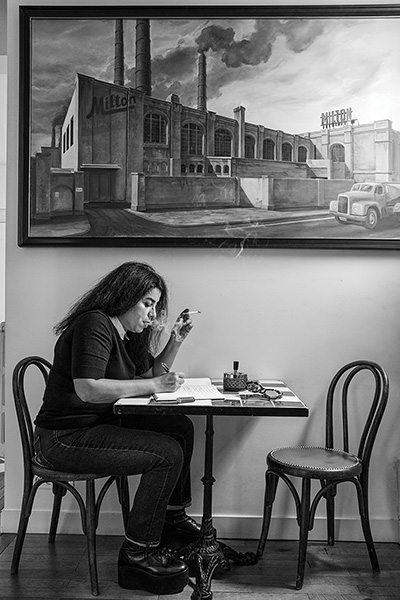
I chose each person for the quality of their work. As often as not, I had never seen a particular writer before we met. But as I began to edit the film, I saw immediately that no matter how each one appeared to me at first, when they came before the camera, they all appeared exceptional. Their faces were full of meaning.
What is it that gives them such presence? How is it that writers, unlike any other group I’ve photographed, are so calmly centered, so seemingly free of anxiety? Don’t most of us feel a certain level of discomfort when being photographed? But these writers seemed able to part the curtain of self-doubt. They were all highly accomplished and well aware of their reputations. Of course, having a portrait made takes little of the toll of writing. But what made these writers unusual, I believe, was their ability to go beyond the “picture face” that most of us present to the camera, to dig into themselves to reveal something of the human predicament. Tom Stoppard gave me 15 minutes on a London sidewalk, when usually I would have had hours or days. We spent eight of those minutes searching for a quiet location in Covent Garden that would be suitable for the portrait. Once we found the spot, Stoppard looked directly into my camera, and in less than a minute, I knew I had the picture. The playwright had given me a gift—a look filled with emotion, heartbreaking and wonderful.
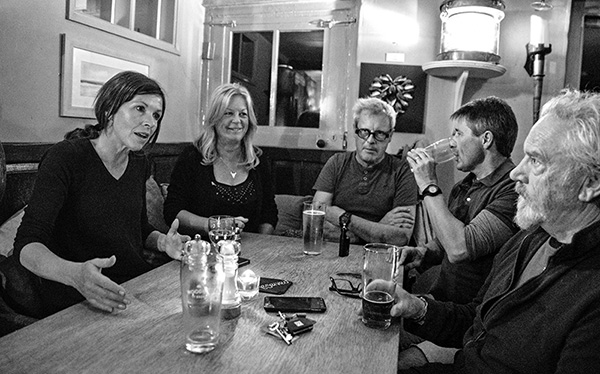
I made a portrait of each writer, then added photographic reportage to show where each person lived or worked or gathered with friends. Their private territories were full of objects and details that reflected their daily lives, those things that inspire and comfort them. By showing a combination of portraits and snapshots, I hoped to create a fresh series of pictures for each writer and provide insight into their singular personalities.
All the writers lived in interesting houses; some were uncommon, others were splendid, none was mundane. Their houses were in cities, in the countryside, by the sea, and even in remote borderlands. Not one of the writers seemed to have simply landed in a place by accident. Their locations were as specific as their writing styles. Upon visiting many of them at home, I found each to be visual in the extreme. And I was never disappointed, finding invariably a person of wide-ranging curiosity whose surroundings reflected a perceptive eye.
To give my subjects an idea of what I needed, I showed them a selection of photographs I’d taken of other writers for the book. Each of them seemed to enjoy looking at the pictures of the others, moving slowly through the entire batch. Holding one photo, Peter Carey noticed a tiny figure of Colm Tóibín, walking by the Irish Sea, barely recognizable in the far distance. “Oh, is that Colm?” Carey asked. Then, the next picture: Tóibín up close, sitting in a chair with his arms on top of his head, looking directly into the camera. “Ah, yes, you got it! Colm has such a good face.”
Sam Shepard asked, “May I keep this print?” When he looked at the photograph of Thomas McGuane on horseback. “He was really good to let me fish on his ranch.”
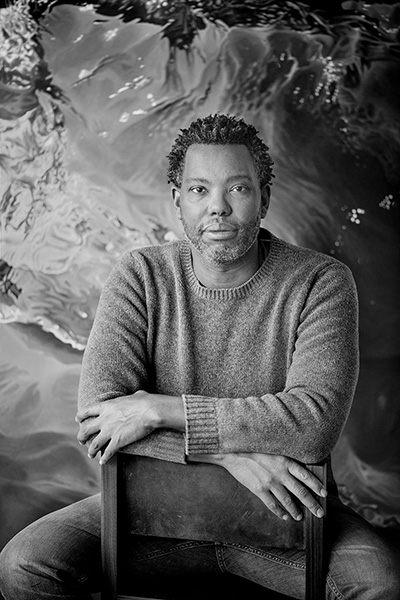
Gabriel García Márquez looked through all the photographs without a word, finally holding up one of August Kleinzahler dancing a little jig down the aisle of Amoeba Music in San Francisco. With a quick shake of his hand, he let me know this particular shot surprised and amused him.
Carlos Fuentes said that throughout history, people had been faceless until photography was invented. He used the word revolution. People had a face for the first time, an identity. As I watched the writers’ reactions as they looked through my photographs, I sensed they felt as I do about photography—it’s magic. Tim O’Brien even practices magic, entertaining his two sons with a magician’s skill. O’Brien said that for him, writing is another form of magic—invention, transformation, sleight of hand, all taking reality to another level—just like a photograph.
The rainy morning when I photographed Jim Crace on Mount Bonnell, about 700 feet above the Colorado River in Austin, he was reciting to himself lines from a Philip Larkin poem about photography and memory and lacerations of the heart. Larkin wrote that “the impulse to preserve lies at the bottom of all art.”
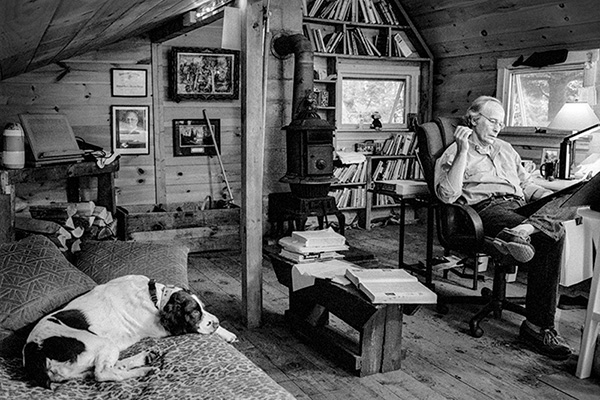
The writer takes up his pen, the artist his brush, the photographer his camera, each intent on halting the passage of time, the disappearance of memory. Pablo Picasso caught the brutality of the Spanish Civil War forever when he painted Guernica, just as Robert Capa, with his grainy, blurred images of the invasion of Normandy, recorded for all time the pitiless slaughter of men at war.
For me, photography has always been a way to stave off loss… loss of family, loss of place, even loss of memory. We know life is finite. “Death is the great Maecenas,” Carlos Fuentes said, “the great angel of writing.” To work to record, to preserve what we saw and heard and felt, is the strongest impulse of the creative mind, a defiant gesture against time. The true artist is driven to take pictures, or arrange words, or draw lines. So much of life, of creativity, comes from the desire for permanence.
Laura Wilson’s photographs have appeared in The New York Times Magazine, The New Yorker, Vanity Fair, and London’s Sunday Times Magazine, among others. She has published six books of photographs and text including Avedon at Work, Grit and Glory, That Day: Picture in the American West, and From Rodin to Plensa.
The Exhibition
by HARRY RANSOM CENTER
Photographer Laura Wilson has photographed some of the most influential writers of our time. Drawn from her new book, The Writers: Portraits by Laura Wilson (Yale University Press, 2022), the exhibition at the Ransom Center is a selection of her powerful portraits documenting highly accomplished, award-winning writers. Immersing herself in each writer’s own personal setting, Wilson reveals the details that have inspired their literary masterworks.
In the galleries, visitors can view stunning photographic portraits of authors such as J. M. Coetzee, Jim Crace, Rachel Cusk, Edwidge Danticat, Louise Erdrich, Carlos Fuentes, Gabriel García Márquez, Tim O’Brien, Zadie Smith, and Tom Stoppard, among many others.
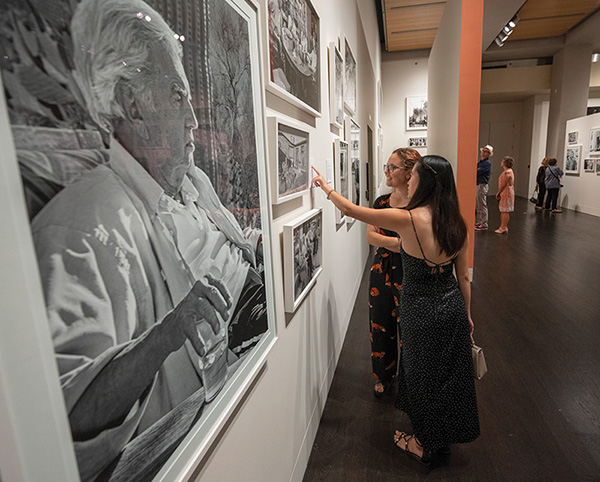
“Do these photographs get at the question every writer is asked a thousand times within a life span—what makes you write these books?” writes Pulitzer Prize-winning author Louise Erdrich (The Night Watchman, 2020) in the introduction to the Wilson’s book (she also is one of Wilson’s subjects). “These photographs make writers seem suspiciously normal. Yet something happens when Laura Wilson goes back to her photography studio and we sit down to write. We tap into the ancient pleasures of storytelling and at the same time take on the human struggle against the obvious.”
The exhibition will be on view through January 1, 2023.
TOP IMAGE: Tom Stoppard in London, 2019. © Laura Wilson
